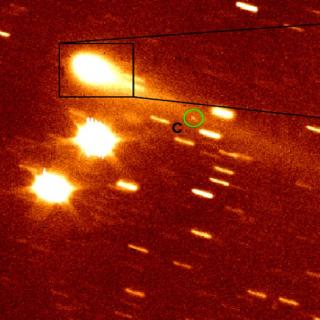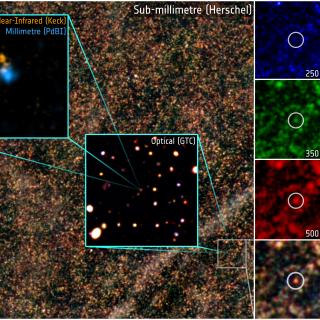Bibcode
Moskovitz, Nicholas; Thomas, Cristina; Pravec, Petr; Lister, Tim; Polakis, Tom; Osip, David; Kareta, Theodore; Rożek, Agata; Chesley, Steven R.; Naidu, Shantanu P.; Scheirich, Peter; Ryan, William; Ryan, Eileen; Skiff, Brian; Snodgrass, Colin; Knight, Matthew M.; Rivkin, Andrew S.; Chabot, Nancy L.; Ayvazian, Vova; Belskaya, Irina; Benkhaldoun, Zouhair; Berteşteanu, Daniel N.; Bonavita, Mariangela; Bressi, Terrence H.; Brucker, Melissa J.; Burgdorf, Martin J.; Burkhonov, Otabek; Burt, Brian; Contreras, Carlos; Chatelain, Joseph; Choi, Young-Jun; Daily, Matthew; de León, Julia; Ergashev, Kamoliddin; Farnham, Tony; Fatka, Petr; Ferrais, Marin; Geier, Stefan; Gomez, Edward; Greenstreet, Sarah; Gröller, Hannes; Hergenrother, Carl; Holt, Carrie; Hornoch, Kamil; Husárik, Marek; Inasaridze, Raguli; Jehin, Emmanuel; Khalouei, Elahe; Eluo, Jean-Baptiste Kikwaya; Kim, Myung-Jin; Krugly, Yurij; Kučáková, Hana; Kušnirák, Peter; Larsen, Jeffrey A.; Lee, Hee-Jae; Lejoly, Cassandra; Licandro, Javier; Longa-Peña, Penélope; Mastaler, Ronald A.; McCully, Curtis; Moon, Hong-Kyu; Morrell, Nidia; Nath, Arushi; Oszkiewicz, Dagmara; Parrott, Daniel; Phillips, Liz; Popescu, Marcel M.; Pray, Donald; Prodan, George Pantelimon; Rabus, Markus; Read, Michael T.; Reva, Inna; Roark, Vernon; Santana-Ros, Toni; Scotti, James V.; Tatara, Taiyo; Thirouin, Audrey; Tholen, David; Troianskyi, Volodymyr; Tubbiolo, Andrew F.; Villa, Katelyn
Bibliographical reference
The Planetary Science Journal
Advertised on:
2
2024
Citations
11
Refereed citations
11
Description
On 2022 September 26, the Double Asteroid Redirection Test (DART) spacecraft impacted Dimorphos, the satellite of binary near-Earth asteroid (65803) Didymos. This demonstrated the efficacy of a kinetic impactor for planetary defense by changing the orbital period of Dimorphos by 33 minutes. Measuring the period change relied heavily on a coordinated campaign of lightcurve photometry designed to detect mutual events (occultations and eclipses) as a direct probe of the satellite's orbital period. A total of 28 telescopes contributed 224 individual lightcurves during the impact apparition from 2022 July to 2023 February. We focus here on decomposable lightcurves, i.e., those from which mutual events could be extracted. We describe our process of lightcurve decomposition and use that to release the full data set for future analysis. We leverage these data to place constraints on the postimpact evolution of ejecta. The measured depths of mutual events relative to models showed that the ejecta became optically thin within the first ∼1 day after impact and then faded with a decay time of about 25 days. The bulk magnitude of the system showed that ejecta no longer contributed measurable brightness enhancement after about 20 days postimpact. This bulk photometric behavior was not well represented by an HG photometric model. An HG 1 G 2 model did fit the data well across a wide range of phase angles. Lastly, we note the presence of an ejecta tail through at least 2023 March. Its persistence implied ongoing escape of ejecta from the system many months after DART impact.
Related projects

Small Bodies of the Solar System
This project studies the physical and compositional properties of the so-called minor bodies of the Solar System, that includes asteroids, icy objects, and comets. Of special interest are the trans-neptunian objects (TNOs), including those considered the most distant objects detected so far (Extreme-TNOs or ETNOs); the comets and the comet-asteroid
Julia de
León Cruz

Formation and Evolution of Galaxies: Observations in Infrared and other Wavelengths
This IAC research group carries out several extragalactic projects in different spectral ranges, using space as well as ground-based telescopes, to study the cosmological evolution of galaxies and the origin of nuclear activity in active galaxies. The group is a member of the international consortium which built the SPIRE instrument for the
Ismael
Pérez Fournon